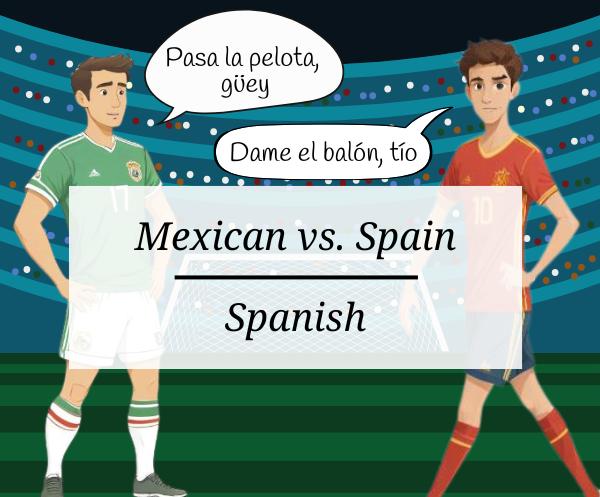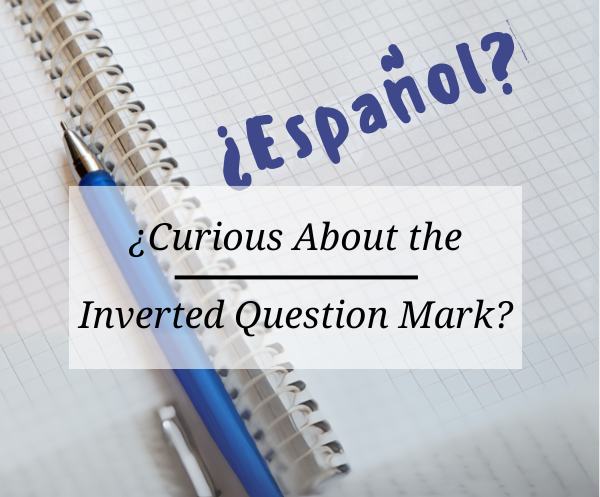If you’ve ever wondered, “how different is Mexican Spanish from Spain Spanish?” here’s the quick answer: they’re both Spanish, but they’re spoken in very different ways. Think British vs. American English. Each has its own vocabulary, pronunciation, and grammar quirks shaped by culture and history.
So yes, to answer another common question, Spain Spanish is different than Mexican Spanish, and the differences go beyond accents.
For clarity, Spain’s Spanish is often referred to as Castilian Spanish while Mexican Spanish is simply called Mexican Spanish, reflecting its regional flavor. If you’re considering learning Spanish, this guide will walk you through the key differences, from vocabulary to grammar, and help you decide which variety to focus on.
Table of Contents
- Historical Context
- Phonetic Differences
- Lexical Differences
- Grammatical Differences
- Cultural Influence
- Learning Tips
- Conclusion
Historical Context
When looking at Castilian Spanish vs. Mexican Spanish, it’s crucial to understand their roots. Spain’s language evolved on the Iberian Peninsula with influences from the Romans, Visigoths, and Moors¹. When Spanish reached Mexico, it merged with indigenous languages like Nahuatl, which gave us words like “tomate” (tomato) and “chocolate”². This history made Mexican Spanish a unique blend of Spanish and native terms, while Castilian Spanish in Spain stayed closer to its European origins.
Phonetic Differences
Pronunciation Variations
One of the clearest differences between Castilian Spanish vs. Mexican Spanish is pronunciation. In most regions of Spain, the “c” before “e” or “i” sounds like “th,” as in “thanks,” while in Mexico, it’s pronounced like an “s”:
- Example: “Gracias” in Mexico, “Grathias” in Spain.
Intonation
The intonation patterns of Spanish vary significantly between regions, particularly between Spain and Mexico. In Spain, especially in regions like Andalusia and the Canary Islands, speech often features a more melodic or “sing-song” intonation, characterized by noticeable pitch variations. In contrast, Mexican Spanish typically exhibits a more neutral and consistent intonation pattern.
Lexical Differences
Vocabulary differences are one of the biggest distinctions between these dialects. Here’s a list of some commonly used terms:
| English | Mexican Spanish | Castilian Spanish |
|---|---|---|
| Car | Carro | Coche |
| Pen | Pluma | Bolígrafo |
| Cellphone | Celular | Móvil |
| Computer | Computadora | Ordenador |
| Juice | Jugo | Zumo |
| Ball | Pelota | Balón |
| Dude | Güey | Tío |
| Bus | Camión | Autobús/Bus |
| Straw | Popote | Pajita/Cañita |
| Apartment | Apartamento | Piso |
| Ticket | Boleto | Billete |
| Work | Chamba | Curro |
Indigenous Influence
Mexican Spanish incorporates many words from Nahuatl and other indigenous languages, such as “elote” (corn on the cob) and “guajolote” (turkey)³. These words give Mexican Spanish its unique regional touch.
Slang and Colloquialisms
Regional slang is one of the most striking distinctions between Mexican Spanish and Castilian Spanish. Slang reflects cultural nuances, and phrases that are common in one region might be confusing or even amusing in another. Here are some popular examples:
-
Cool: In Mexican Spanish, the word “chido” is used to mean “cool” or “awesome.” In Spain, you’d say “guay” instead. Other Mexican variations include “padre,” while some regions of Spain also use “mola” (e.g., Eso mola – “That’s cool”).
-
To Be Broke: Castilian Spanish has a unique phrase, “estar a dos velas,” which translates to “to be at two candles” and means “to be broke.” In Mexican Spanish, you’d likely hear “andar sin lana” or “estar pelado” (being skinned).
-
Money: The word for money varies, too. In Mexico, “lana” (literally “wool”) is often used, as in “No tengo lana” (“I don’t have any money”). In Spain, “pasta” is a popular slang word for money.
-
Hangover: If you’re recovering from a night out, in Mexico you might say, “Tengo cruda” (“I have a hangover”). In Spain, they’d say, “Tengo resaca.”
-
Snitch: In Spain, calling someone a snitch or tattletale might involve saying “ser un chivato” (“to be a tattletale”), while in Mexico it’s more common to say “ser un soplón”.
-
Kids: In Mexico, “chamaco” or “escuincla/o” are used to mean “kid,” while in Spain, you’d say “chaval” or “chiquillo.”
-
Being Drunk: In Mexican Spanish, you might say “estar pedo” (“to be drunk”), while in Spain, “estar borracho” is the go-to. Additionally, “estar ciego” (literally “to be blind”) is another slang term used in Spain for being very drunk.
-
Police: In Mexico, people sometimes refer to the police as “la tira” or “la poli”, while in Spain, “la pasma” or “los maderos” are common slang terms.
See also: 75 Most Commonly Used Spanish Verbs (with 10 Conjugations)
Grammatical Differences
Verb Conjugations
Spain uses vosotros for informal “you all,” whereas Mexican Spanish uses ustedes in both formal and informal settings. Here’s how verb conjugations look in each:
| English | Castilian Spanish (Vosotros) | Mexican Spanish (Ustedes) |
|---|---|---|
| You all eat | Vosotros coméis | Ustedes comen |
| You all run | Vosotros corréis | Ustedes corren |
| You all speak | Vosotros habláis | Ustedes hablan |
Quick Tip: For learners interested in Latin America, you can safely skip vosotros and stick to the simpler ustedes conjugation used in Mexican Spanish.
Formal vs. Informal Speech
Both dialects distinguish between formal (usted) and informal (tú), though their usage varies. In Spain, “usted” is typically reserved for elders or authority figures. In Mexico, it’s more common to use “usted” as a sign of respect, even among younger people⁵.
Cultural Influence
Language is a window into culture, and Mexican Spanish and Castilian Spanish reflect their respective regions.
Mexican Spanish, however, reflects the blend of indigenous and Spanish influences, seen in everything from the vocabulary to the traditions associated with words.
Spain’s culture has regional diversity, with distinct traditions and languages across areas like Andalusia and Catalonia. This regional diversity adds depth to the country’s language, where words for everyday items can vary significantly from one region to another. Here are some notable examples:
Example: Regional Words for Popcorn
In most of Spain, “palomitas” or “palomitas de maíz” (literally, “little doves of corn”) is the go-to term for popcorn. But various regions have their own words:
- Catalonia: Crispetes
- Valencia: Roses
- Canary Islands: Cotufas
Each term reflects local cultural nuances and historical influences in the area.
And, according to Speaking Latino, there are an impressive 17 different words for “popcorn” across Latin America! Each country has its own unique term, reflecting regional dialects and local flavor. For example, in Argentine Spanish, popcorn is known as “pochoclo,” while in Chile, it’s “cabritas.” These variations highlight the diversity within the Spanish language across the Americas.
Learning Tips: Which Spanish Should You Learn?
If you’re new to Spanish, you might wonder if Spain Spanish is different than Mexican Spanish enough to affect your learning experience. Here’s how to choose:
- Location Matters
- Latin America: Go with Mexican Spanish, as it’s widely understood across Latin America.
- Spain: Learn Castilian Spanish if you’re planning to live or work there, as it will help you fit in better.
- Ease of Learning
- Mexican Spanish: The lack of vosotros makes it a bit simpler to learn, especially if you want to communicate with a broader audience in the Americas.
- Castilian Spanish: If you’re intrigued by the history and culture of Spain, Castilian Spanish offers a rich learning experience but has more grammatical nuances.
- Content Preferences
- Latin Media: If you enjoy telenovelas or Latin American music, Mexican Spanish may feel more accessible and relevant.
- European Content: Prefer Spanish films and literature? Learning Castilian Spanish will help you connect with that content in its original form.
- Long-Term Goals
- Ultimately, both dialects are mutually intelligible, so starting with one doesn’t limit you. Begin with the variety that meets your immediate needs, and over time, you’ll naturally pick up differences if you engage with both dialects.
Conclusion
In summary, Mexican Spanish and Spain Spanish have distinct differences, from pronunciation to vocabulary and grammar. Choosing one depends on where you’ll be using Spanish the most, but understanding these variations can add depth to your language skills, making your Spanish journey more rewarding and nuanced.
References
- History of the Spanish language - Wikipedia
- Spanish dialects and varieties - Wikipedia
- Differences: Spain vs. Mexican Spanish - TheWordPoint
- Diverse Spanish Dialects: A Deep Dive - My Spanish Dictionary
- ¡Qué padre! 6 differences between Mexican Spanish and ‘Spanish Spanish - Coffee Break Languages
- Spanish Linguistic History and Cultural Contexts - Talkpal





